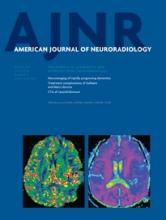Abstract
BACKGROUND AND PURPOSE: An increased prevalence of disabilities is being observed as more preterm infants survive. This study was conducted to evaluate correlations between brain MR imaging measurements taken at a term-equivalent age and neurodevelopmental outcome at 2 years' corrected age among very low–birth-weight infants.
MATERIALS AND METHODS: Of the various brain MR imaging measurements obtained at term-equivalent ages, reproducible measurements of the transcerebellar diameter and anteroposterior length of the corpus callosum on sagittal images were compared with neurodevelopmental outcomes evaluated by the Bayley Scales of Infant Development (II) at 2 years' corrected age (mean ± standard deviation, 16.1 ± 6.4 months of age).
RESULTS: Ninety infants were enrolled. The mean gestational age at birth was 27 weeks and the mean birth weight was 805.5 g. A short corpus callosal length was associated with a Mental Developmental Index <70 (P = .047) and high-risk or diagnosed cerebral palsy (P = .049). A small transcerebellar diameter was associated with a Psychomotor Developmental Index <70 (P = .003), Mental Developmental Index <70 (P = .004), and major neurologic disability (P = .006).
CONCLUSIONS: A small transcerebellar diameter and short corpus callosal length on brain MR imaging at a term-equivalent age are related to adverse neurodevelopmental outcomes at a corrected age of 2 years and could be a useful adjunctive tool for counseling parents about future developmental outcomes.
ABBREVIATIONS:
- AED
- antiepileptic drug
- NICU
- neonatal intensive care unit
- MDI
- Mental Developmental Index
- PDI
- Psychomotor Developmental Index
- TCD
- transcerebellar diameter
- © 2014 by American Journal of Neuroradiology












